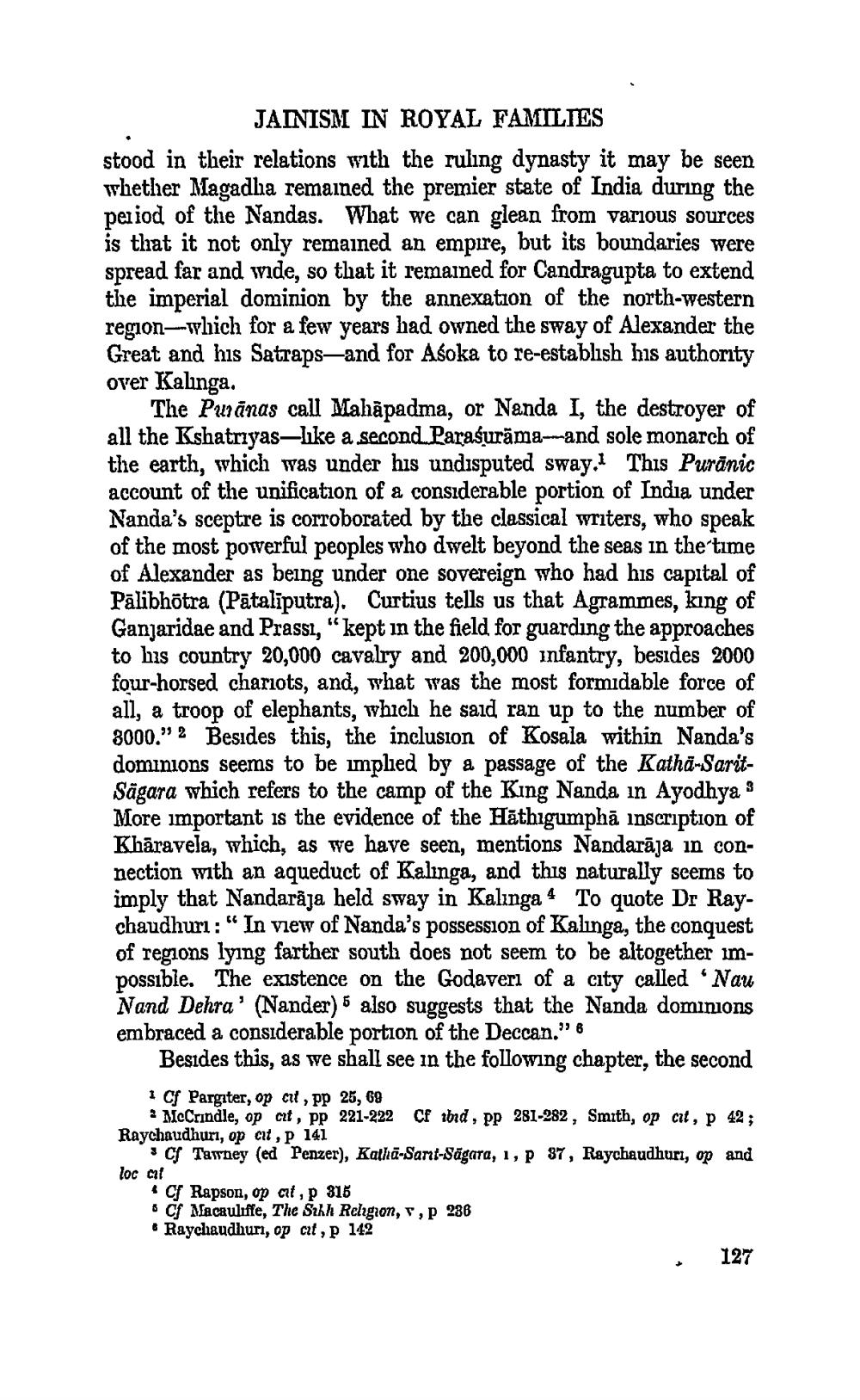________________ JAINISM IN ROYAL FAMILIES stood in their relations with the ruling dynasty it may be seen whether Magadha remained the premier state of India during the period of the Nandas. What we can glean from various sources is that it not only remained an empire, but its boundaries were spread far and wide, so that it remained for Candragupta to extend the imperial dominion by the annexation of the north-western region--which for a few years had owned the sway of Alexander the Great and his Satraps and for Asoka to re-establish his authority over Kalinga, The Pwanas call Mahapadma, or Nanda I, the destroyer of all the Kshatriyas like a second Parafurama-and sole monarch of the earth, which was under his undisputed sway. This Puranic account of the unification of a considerable portion of India under Nanda's sceptre is corroborated by the classical writers, who speak of the most powerful peoples who dwelt beyond the seas in the time of Alexander as being under one sovereign who had his capital of Palibhatra (Pataliputra). Curtius tells us that Agrammes, king of Ganjaridae and Prassi, " kept in the field for guarding the approaches to his country 20,000 cavalry and 200,000 infantry, besides 2000 four-horsed chariots, and, what was the most formidable force of all, a troop of elephants, which he said ran up to the number of 8000," 2 Besides this, the inclusion of Kosala within Nanda's dominions seems to be implied by a passage of the Katha-SaritSagara which refers to the camp of the King Nanda in Ayodhya 9 More important is the evidence of the Hathigumpha inscription of Kharavela, which, as we have seen, mentions Nandaraja in connection with an aqueduct of Kalings, and this naturally seems to imply that Nandaraja held sway in Kalinga 4 To quote Dr Raychaudhuri:" In view of Nanda's possession of Kalinga, the conquest of regions lying farther south does not seem to be altogether impossible. The existence on the Godaveri of a city called 'Nau Nand Dehra' (Nander) 5 also suggests that the Nanda dominions embraced a considerable portion of the Deccan." 6 Besides this, as we shall see in the following chapter, the second 1 Cf Pargiter, op art, pp 25, 69 McCrindle, op cut, PP 221-222 CE id , pp 281-282, Smith, op cit, p 42; Raychaudhuri, op cit, p 141 C Tawney (ed Penzer), Katha-Sant-Sagara, 1, p 87, Raychaudhur, op and loc al CT Rapson, op at, 315 * CT Macauliffe, The Sun Rclgron, , p 286 * Raychaudhur, op cit, P 142 * 127




